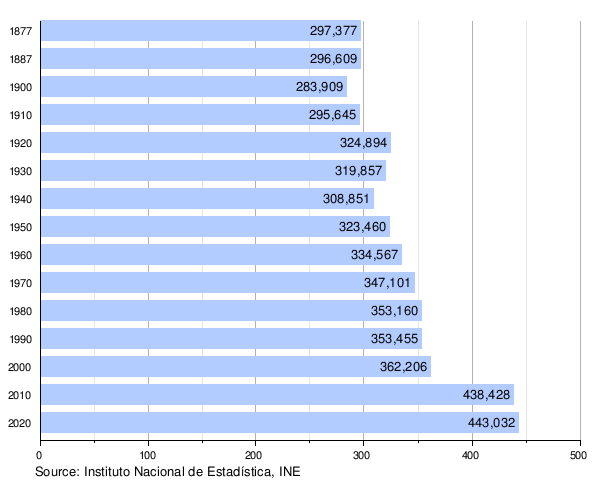Province of Lleida
Province of Lleida
| |
|---|---|
|
Ranked 33rd | |
| Official languages | |
| Parliament | Cortes Generales |
| Website | www |


The Province of Lleida (Western Calatan:
Of the population of 414,015 (2007), about 30% live in the capital,
. There are 231 municipalities in Lleida.Located in the
The Aigüestortes i Estany de Sant Maurici National Park is located in this province.
The province enjoys a thriving fruit-growing industry, including pears and peaches.
According to the 2006
Language
The province of Lleida has a characteristic
Lleida is the only province in Catalonia to have a second native language:
| Largest groups of foreign residents | |
| Nationality | Population (2017) |
|---|---|
| 21,748 | |
| 7,094 | |
| 3,703 | |
| 2,947 | |
| 2,549 | |
Tourism
Lleida is located in the western part of
Nature
Lleida has a wide variety of landscapes. This includes the mountain area of the Pyrenees. The Aigüestortes i Estany de Sant Maurici National Park, the only National Park in Catalonia, and the Alt Pirineu (High Pyrenees) and Cadí-Moixeró natural parks are all in the Pyrenees region. The Collegats-Terradets Territorial Park, the Boumort Natural Hunting Reserve and the Congost de Mont-rebei gorge are in the Pre-Pyrenees.
In contrast, the Lleida Plain has more peaceful landscapes. In some cases, these are rather sober, while in others there is fertile land with century-old olive trees, fruit trees, meadows and crop fields. In this area, it is particularly relevant to highlight such spectacular settings as the Estany d'Ivars i Vila-sana pool and the Aiguabarreig (confluence) of the rivers Segre, Cinca and Ebro. On 6 January 2021, in Tuc de la Llança, Spain's absolute minimum temperature of −34.1 °C (−29.4 °F) was registered.[3]
Sports
The comarques (local districts) of Lleida are also market leaders within Spain in the provision of adventure sports, with more than 170 companies organising around fifty different activities on land and water and in the air. This area is also Spain's leading ski destination.[citation needed]
Lleida has 11 different ski resorts which are marketed under the brand "Neu de Lleida" (Lleida Snow) and offer over 450 km (280 mi) of ski slopes. Their 81 ski lifts have the capacity to carry 115,000 skiers per hour, while the area immediately surrounding these winter sports complexes can also accommodate more than 30,000 visitors.[citation needed]
Culture
Lleida has a rich architectural heritage. The churches of the
The city of Lleida
Population development
The historical population is given in the following chart:

Notes and references
- ^ Population Figures referring to Municipal Register 1 January 2013 Archived 6 October 2014 at the Wayback Machine – Instituto Nacional de Estadística. (National Statistics Institute)
- ^ "Biografia – Joan Talarn i Gilabert". Retrieved 6 March 2021.
- ^ "Meteo Valls d'àneu" (in Spanish). Meteo Valls d'Àneu. Retrieved 6 January 2021.
